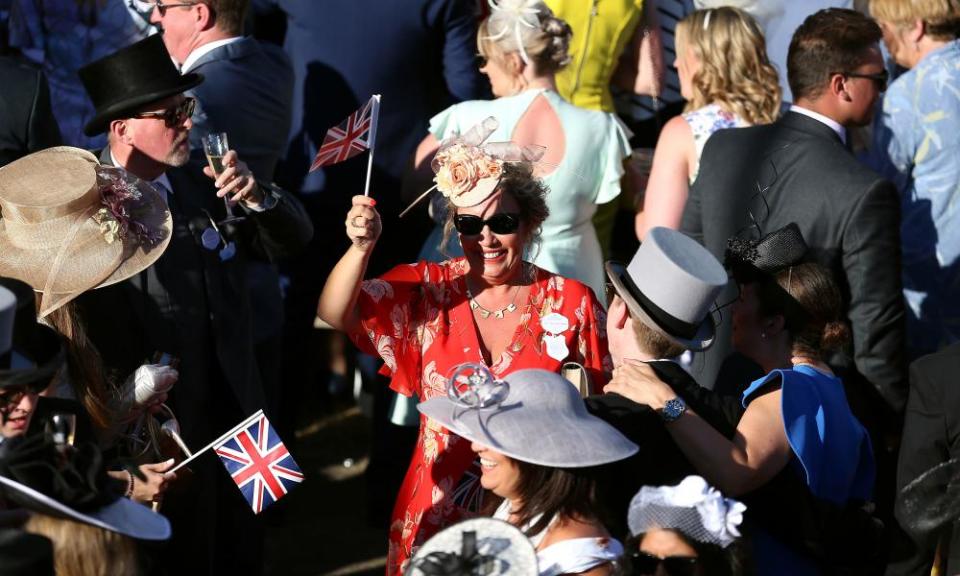Talking Horses: Royal Ascot will cost a packet but track couldn’t be happier

Even with the daily schedule increased to seven races from the traditional six, Royal Ascot 2021 will not be the biggest as there were 36 races 12 months ago. Whether it will be one of the best remains to be seen, though the early signs – fine weather, fast ground and a long list of exceptional horses lined up to run – are promising.
There is one certaintybefore the Flat season’s most glamorous and prestigious race meeting: from Ascot’s point of view, it will leave the biggest hole in their balance sheet of any event in its 250-year history.
Related: Talking Horses: Royal Ascot may need to embrace change in troubled times
Pandemic insurance and a significant cut in the prize funds cushioned the blow from racing behind closed doors 12 months ago. This time around, the prize money is back up to £6m over the five days, a 66% increase to the £3.61m on offer in 2020, while the attendance of 12,000 – the biggest at a British track since March 2020 – will mean a lot of extra overheads but none of the economies of scale that come with a full house of 80,000 hungry, thirsty and betting-minded racegoers.
Ascot is reluctant to confirm just how much this year’s Royal meeting will cost – they will not be sure themselves for some time – but a number in high seven figures is being suggested. That is for an event that normally comprises 70% of its annual business, and a similar chunk of its annual profit, which reached £7.3m in 2019.
Yet the Queen’s racecourse is as delighted as it is possible to be about waving goodbye to many millions of pounds. While the Covid restrictions now seem sure to be extended at least until the middle of July, a Royal meeting that looks, feels and sounds much more like it should will be a huge stride forward for Ascot and the sport as a whole.
For the spectators, it will be a return to normal, or at least a fair approximation of it (if putting on a morning suit or a fascinator that passes the substantial test, just to watch horses run around a track can ever be classed as normal behaviour).
Related: Talking Horses: Showalong can shine at York warm-up for Royal Ascot
For most of the horses, on the other hand, racing in front of a five-figure crowd will be an entirely new experience and not necessarily one all of them will appreciate. Just over half of the runners at a typical Royal Ascot – about 270 out of 500 – are either two or three years old. This year, not a single one of them will have raced in front of a such a large crowd or anything close to it.
Royal Ascot’s racegoers – Eliza Doolittle excepted – are not generally given to roaring them home like they do at Cheltenham, but it would be no great surprise, after two years away, if they let themselves off the leash a little this week. While the main stand remains as vast and hangar-like as ever, 12,000 people – fans, too, rather than the hospitality set – should ensure the big-day buzz returns to a British track at long last.
It promises to be an interesting test of the extent to which horses can sense and respond to a “big-race atmosphere, and not just for the younger generations. Palace Pier, for instance, the hottest favourite of the week in the opening Queen Anne Stakes on Tuesday, raced in front of about 2,000 spectators on his two starts as a juvenile in 2019, perhaps 1,000 more in the Prix Jacques le Marois last August and none at all on his other five starts.
Palace Pier is the top-rated horse on the planet and, as was also the case with Frankel nine years ago, it does not feel entirely right that his star turn will come and go with 34 races still left to run. But the supporting cast has enough big names and contests to maintain the momentum through the week, including first run of Love, the brilliant dual Classic-winner, against male horses in Wednesday’s Prince Of Wales’s Stakes and Stradivarius’s attempt to equal Yeats’s record of four Gold Cup victories a day later.
For the second year running, there will be no Royal procession before racing and the Queen could be missing for at least some of the week. The latest suggestion is that she will attend on days when she has a runner, which would mean Tuesday and Wednesdayt at least and possibly Thursday and Friday too (as King’s Lynn, the Queen’s sole entry on Saturday, is declared for Tuesday’s King’s Stand Stakes).
But whether or not the Queen is in the house, it is the other spectators who will make the real difference. Normality, of a sort, is putting on its top hat.

 Yahoo Movies
Yahoo Movies 